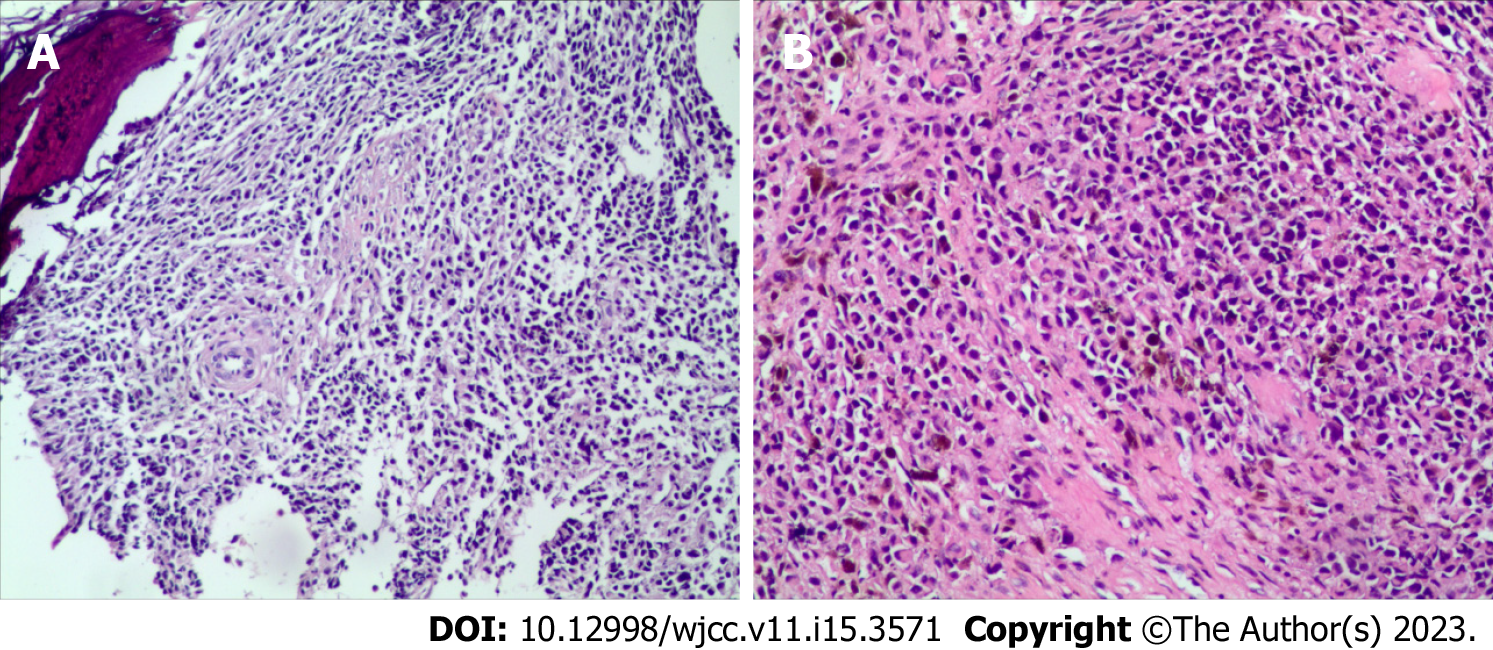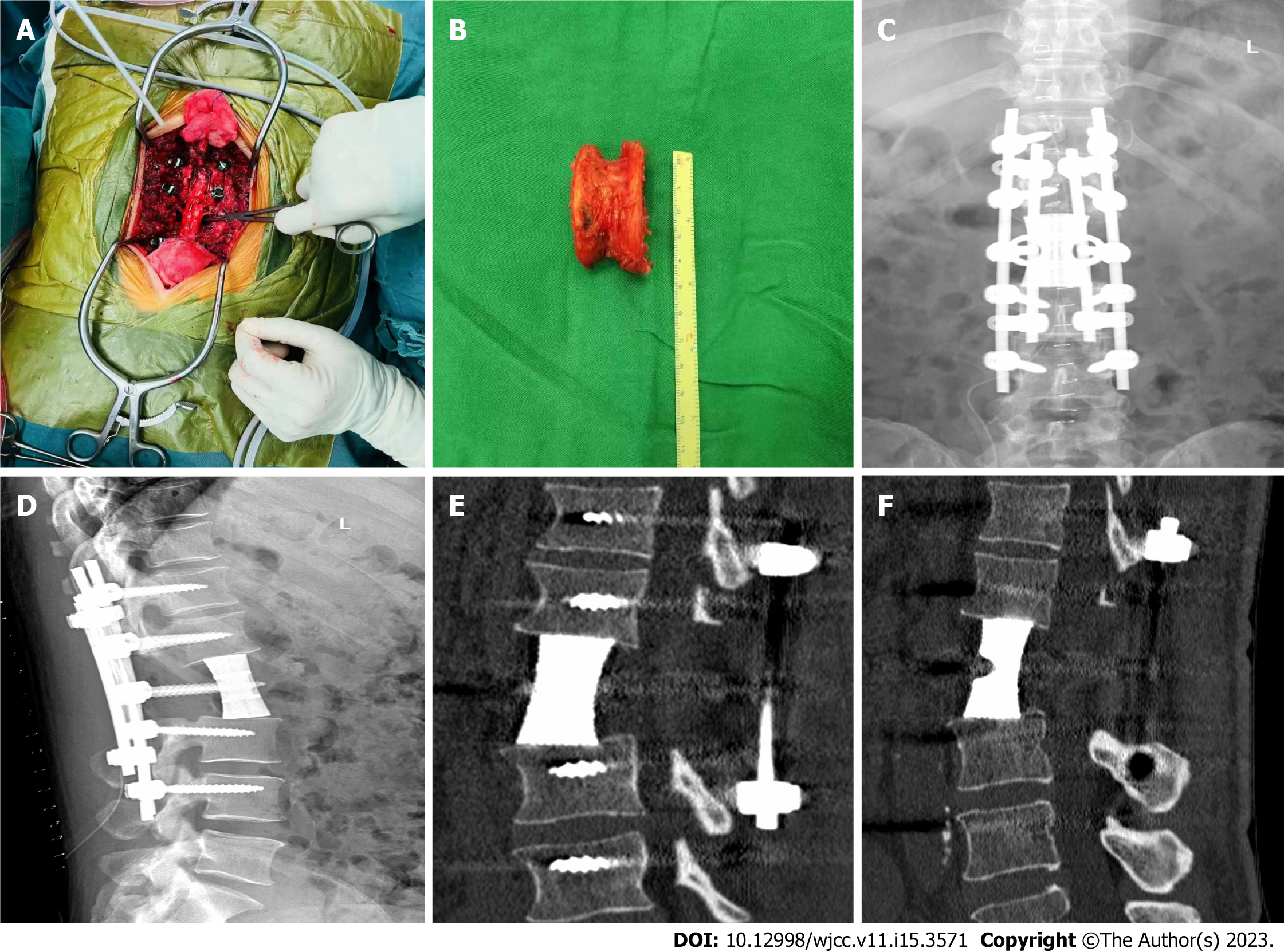Copyright
©The Author(s) 2023.
World J Clin Cases. May 26, 2023; 11(15): 3571-3577
Published online May 26, 2023. doi: 10.12998/wjcc.v11.i15.3571
Published online May 26, 2023. doi: 10.12998/wjcc.v11.i15.3571
Figure 1 Magnetic resonance imaging and computed tomography of the patient's lumbar spine.
A: In the sagittal position, tumors may be compressing the spinal cord; B: The transverse view shows that the right spinal cord is compressed by a tumor; C: The transverse position shows destruction of the right pedicle and vertebral body; D: In the sagittal position, the posterior side of the spine is destroyed by tumors.
Figure 2 Histopathology of lumbar melanoma.
A: Vertebral biopsy shows some tumor cells; B: After vertebral body resection, a large number of tumor cells can be seen.
Figure 3 Patient intraoperative and postoperative follow-up results.
A and B: During the operation, the lumbar vertebra 2 was completely removed; C and D: The anteroposterior X-ray film of the lumbar spine 2 wk after surgery revealed that the 3D-printed prosthesis was well attached to the upper and lower vertebral plates; E and F: Six months after surgery, a lumbar computed tomography revealed that the boundary between the three-dimensional (3D)-printed prosthesis and the adjacent vertebral body had disappeared and bone trabeculae had grown in.
- Citation: Guo ZX, Zhao XL, Zhao ZY, Zhu QY, Wang ZY, Xu M. Malignant melanoma resection and reconstruction with the first manifestation of lumbar metastasis: A case report. World J Clin Cases 2023; 11(15): 3571-3577
- URL: https://www.wjgnet.com/2307-8960/full/v11/i15/3571.htm
- DOI: https://dx.doi.org/10.12998/wjcc.v11.i15.3571











